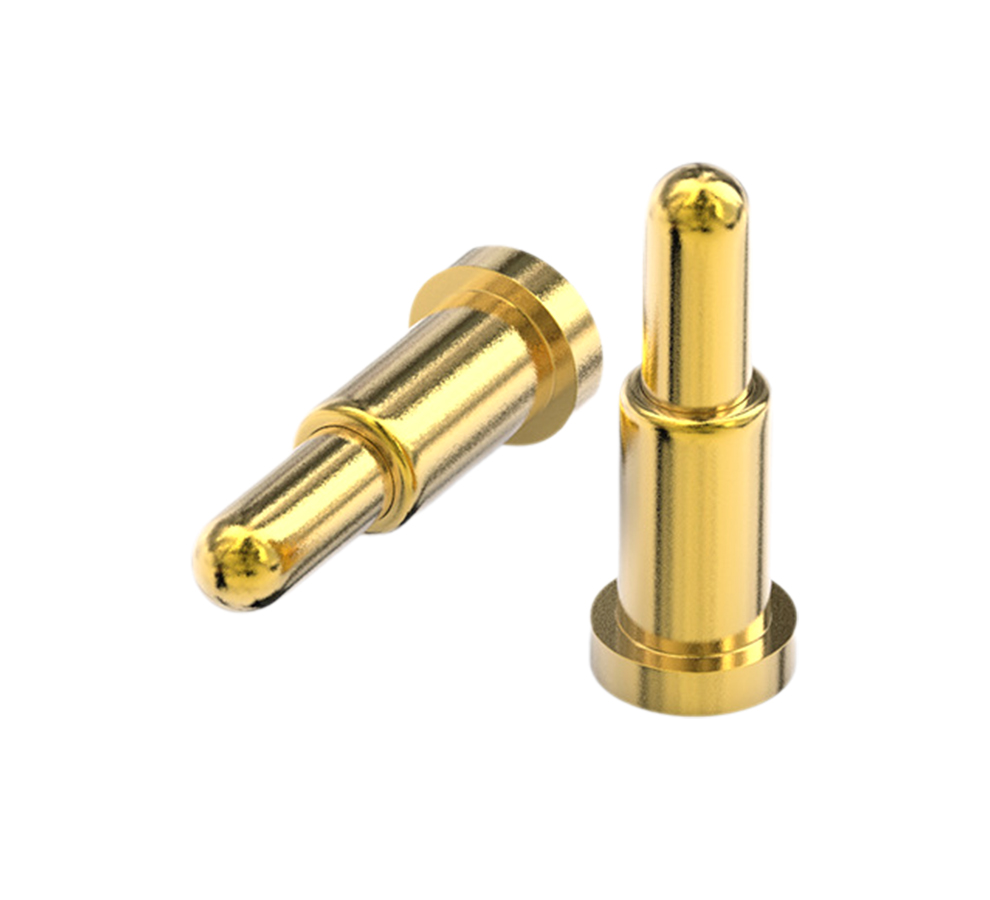Time:2025-04-23 Views:1 source:News

The production of pogopin, a crucial component in many electronic devices, involves a series of precise and well - organized manufacturing steps to ensure its functionality and reliability.
1. Material Preparation
The first step in the pogopin production process is the selection and preparation of materials. The main components of a pogopin are the pin, spring, and barrel. High - quality materials are essential for the performance of the pogopin. For the pin, materials such as beryllium copper or phosphor bronze are commonly used due to their excellent electrical conductivity, mechanical strength, and durability. Beryllium copper, for example, offers high strength and good fatigue resistance, making it suitable for repeated mating operations. The spring is usually made of stainless steel or music wire, which provides the necessary elasticity to maintain the contact pressure during the connection. The barrel, often made of brass, serves as the housing for the pin and spring and requires good machining properties for precise assembly. These materials are carefully sourced and inspected for their chemical composition, mechanical properties, and dimensional accuracy before entering the production line.
2. Machining Operations
Pin Machining: The pin is typically manufactured through a series of machining processes. It starts with wire drawing to reduce the diameter of the raw material to the required size. Then, cold heading is used to form the head of the pin, which can have different shapes depending on the design requirements, such as a round head or a flat head. After that, turning and milling operations are carried out to achieve the precise dimensions and surface finish of the pin. Threads may also be cut on the pin if required for specific applications. Each machining step is carefully controlled using advanced CNC machines to ensure high - precision and consistent quality.
Spring Manufacturing: The spring is usually formed by coiling the selected wire. The coiling process determines the spring's pitch, diameter, and number of coils, which directly affect its elastic force. After coiling, heat treatment is often performed to enhance the spring's mechanical properties, such as increasing its strength and stability. This may involve processes like annealing, quenching, and tempering. The spring is then cut to the appropriate length and may undergo additional surface treatments, such as plating, to improve its corrosion resistance.
Barrel Fabrication: The barrel is typically fabricated using processes like stamping or machining. In stamping, a sheet of brass is formed into the barrel shape through a series of dies. Machining, on the other hand, may involve turning, drilling, and threading operations to create the precise internal and external dimensions of the barrel. The barrel needs to have accurate inner diameters to ensure a proper fit for the pin and spring and to allow for smooth movement of the pin.
3. Assembly
The assembly of the pogopin is a critical stage. First, the spring is inserted into the barrel. Care must be taken to ensure that the spring is properly seated and not damaged during insertion. Then, the pin is inserted into the barrel through the spring. The pin should be able to move freely within the barrel while being held in place by the spring's elastic force. The assembly process may be automated using specialized assembly machines, which can accurately position and insert the components at high speeds. After assembly, the pogopin may undergo a crimping or swaging process to secure the components together and ensure a tight fit.
4. Surface Treatment
To improve the electrical conductivity, corrosion resistance, and appearance of the pogopin, surface treatment is applied. Common surface treatments include gold plating, nickel plating, or tin plating. Gold plating, for example, is often used because of its excellent electrical conductivity, low contact resistance, and good corrosion resistance. The plating process is carefully controlled to ensure an even and consistent coating thickness. After plating, the pogopin may be cleaned and dried to remove any residual chemicals.
5. Quality Inspection
Before leaving the factory, each pogopin undergoes a series of quality inspections. Visual inspection is carried out to check for any visible defects, such as scratches, burrs, or improper plating. Dimensional inspection using precision measuring instruments, such as calipers and micrometers, ensures that the pogopin meets the specified dimensions. Electrical tests are also performed to measure the contact resistance, insulation resistance, and electrical conductivity of the pogopin. Mechanical tests, including force - testing to check the spring force and durability testing to simulate repeated mating cycles, are conducted to ensure the reliability of the pogopin. Only those pogopins that pass all the quality inspection criteria are packaged and shipped to customers.
Read recommendations:
Mass production of magnetic connector factory
Advantages of Single-Pin Spring Pogo Pins in Medical Devices